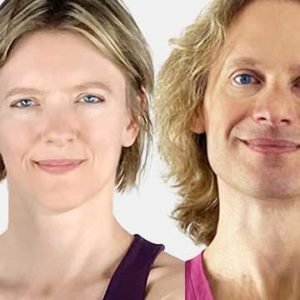
We often hear that aerial is for everyone, and we are huge believers in that! Anyone who walks into an aerial studio should feel warmly welcomed. Anyone getting on an apparatus for the first time should have opportunities to be challenged where they are and experience successes too. Anyone who has been training for a long time should also have the same opportunities, regardless of their level, innate talent, strength, and flexibility.
Nurture your students that arrive with zero ability. Celebrate your students that aren’t inherently “good” at aerial. Keep everyone happy with a welcoming curriculum.
Here is something to consider. Does your studio represent the general population of where you live?
Is there something in your curriculum for the least fit individuals in your general community?
Aerial is uniquely challenging and has a lot of inherent risks. As aerialists we’re working with our own body weight, we’re working against gravity, and we’re moving in a way that is not intuitive to most people who don’t have a gymnastics or acrobatics background.
Fitness isn’t the most important aspect of aerial, but it is a simple concept to generalize about. If this bell curve represents the general community, then the less athletic/fit people are at one end (the 1’s) and the most athletic/fit people are at the other end (the 6’s).
Every community is different, but as a generalization let’s say that 1 represents those with physical issues that make it difficult to exercise or move, as well as those who have never exercised before. And let’s say that 6 represents those who compete athletically at a professional level.
The vast majority of people are going to fall somewhere in the middle, and that might be what your curriculum is geared towards. But, can you still serve those outliers at either end of the spectrum?

You can see that this example has eliminated the 1s and 2s, and that could be a sign that less fit people don’t feel comfortable coming back to class. Or, that the teachers or curriculum don’t offer them enough successes to keep them inspired.
This could include studios where the skills taught in beginner classes require the strength to do pull ups and tuck ups or even straddle ups, or studios where the instructors do not break skills down into small enough progressions for those learners who are not athletically inclined.

So, how do you welcome every body into your classes? It starts with your curriculum and the way that you teach it.
When we started our aerial studio so many years ago, our goal was to be welcoming to anyone who wanted to try, and to be inspiring so that any body would want to continue. We put a lot of thought into every aspect of our studio, especially the idea of creating a welcoming environment that also let students know right up front that aerial is for every body and that safety is paramount in what we do.
That means we wanted to teach to the 1s from the bell curve as well as the 6s.
No, we definitely skew towards a more fit bell curve, that is partially because we teach fitness and we attract those with an interest in movement and getting more fit. However, we do have students who come in with significant challenges and stick with it and succeed. We’ve had students missing limbs, students with major medical issues including organ transplants, sensory processing issues, and more. We’ve had students who have never exercised a day in their life and they fall in love with aerial because it is such a different way to move. So we do have curriculum in place for students who walk in as a 1 from the bell curve, and we do use it and further develop it over time the more students that we teach.
We’ve had students who could climb on day 1, and we’ve had students who took years to be able to climb the silks. And that is really the fun in teaching, is seeing and nurturing all these different bodies and different learning styles.
Our curriculum includes skills, drills and challenges to keep our less fit students engaged and feeling successful, not just on day 1 but all the way through the levels. Success sometimes means just standing up on a low sling and that is okay! Everyone in our classes doesn’t have to do the same thing, but everyone has something to do that they can succeed at and be challenged by.
In our next post we’ll talk about HOW we build curriculum for every body, and how we welcome new students into our space for their first class.
The most important thing in aerial is having the right attitude, and an instructor with the deep knowledge of how aerial works combined with the curiosity to learn from their students’ experience being in their unique body.
Sound like something you’re working on? We’d love to talk to you! We have regular office hours so that you can have one-on-one, face-to-face time with us.
Set up a chat with us here –we can’t wait to hear from you!
